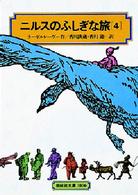- ホーム
- > 洋書
- > 英文書
- > Science / Mathematics
Full Description
A proven systems approach to driving innovation and strategy in complex technical organizations
Innovation is often celebrated in theory but rarely achieved at scale within established technical organizations. Developing the Innovative Technical Organization: How to Implement a Systems Approach to Strategy addresses this challenge by documenting how the Johns Hopkins University Applied Physics Laboratory (APL) successfully elevated its impact through a rigorously designed and executed strategy system.
The book provides proof of an organization that integrated strategy and innovation at enterprise scale. The authors, all current or former senior leaders at APL, describe in detail the Laboratory's decade-long journey of strategy development and implementation, from articulating a long-range vision to building an annual cycle that ensures accountability, alignment, and full enterprise engagement. Rich with practical lessons, cultural insights, and stories of both setbacks and successes, this work goes beyond individual case anecdotes to present a comprehensive methodology. Readers will discover how to adapt this systems approach to their own organizations, ensuring that innovation is not the exception but the expectation.
An essential guide to embedding innovation into strategy and sustaining impact in the face of evolving challenges, the text:
Introduces a full-cycle system linking vision, strategy articulation, decision-making, and accountability processes
Explains how to align investments and resources with strategic priorities to maximize organizational agility.
Shares cultural lessons learned in engaging middle management and staff in innovation initiatives.
Provides detailed examples of innovation experiments and how they influenced organizational transformation.
Demonstrates how strategic innovation prepared APL to weather crises, including the COVID-19 pandemic.
Offers a generalizable framework applicable across technical, engineering, and research organizations.
Highlighting leadership roles and behaviors critical to sustaining strategy-driven innovation,
Developing the Innovative Technical Organizationis a must-read for executives, senior managers, and decision-makers in technical organizations, particularly those seeking to scale innovation and strategy in complex environments. It is recommended for graduate-level courses in engineering management, business strategy, and organizational leadership, and is also a valuable reference for consultants and policymakers.
Contents
FOREWORD ACKNOWLEDGMENTS
1 INTRODUCTION
2 THE STRATEGIC INNOVATION IMPERATIVE
2.1 What Is Innovation?
2.2 Why Innovate?
2.3 What Is the Innovation Imperative for Your Organization?
3 THE INTEGRATED STRATEGY SYSTEM
3.1 Classic Long-Range Vision Framework
3.2 One-Page Strategy Articulation: The VSE
3.3 Alignment of Resources to Strategic Priorities
3.4 Regular Accountability Reviews
3.5 Continuous Decision-Making Process
3.6 Inspiring the Entire Organization to Innovate
3.7 Looking Ahead
4 IMPLEMENTING THE SYSTEM'S ANNUAL CYCLE: PHASE 1
4.1 Background
4.2 Adopting a Discipline for Decision-Making: The Strategic Decision Agenda
4.3 Crafting Strategy on One Page: The VSE
4.4 Adding the "Bite": Alignment of Resources with Strategy
4.5 Ensuring Strategic Accountability: Regular Portfolio Reviews
4.6 Inspiring Innovation: Initial Efforts
4.7 Summary: The Complete Annual Strategy Cycle
5 ANNUAL STRATEGY CYCLE PLANNING GUIDE
5.1 Why a Planning Guide?
5.2 Establishing the Annual Priorities
5.3 Allocating Financial Resources
5.4 Reviews
5.5 Outcomes
5.6 Summary
5.7 Sample Annual Planning Memo
6 BUILDING THE LONG-RANGE VISION TO ANCHOR THE SYSTEM: PHASE 2
6.1 The Perfect Storm Motivates the Long-Term Strategy
6.2 Core Purpose
6.3 Core Values
6.4 Big Hairy Audacious Goal and Defining Innovations
6.5 Vivid Description of the Envisioned Future
6.6 Summary: The Complete System
7 INNOVATING INNOVATION - "KEEP WHAT WORKS"
7.1 Permission
7.2 Proximity
7.3 Privacy
7.4 Perspective
7.5 Performance
7.6 Summary
8 ENGAGING MIDDLE MANAGEMENT
8.1 The Critical Role of Middle Managers
8.2 That's a Nice VSE, But What About Me?
8.3 But We're Already Too Busy!
8.4 What About My Day Job?
8.5 Experimentation Is the Key
8.6 Augmenting the Workforce
8.7 Summary: Key Takeaways
9 COMMUNICATING THE STRATEGY
9.1 Communications' Central Role in Effective Strategy Execution
9.2 Essential Communications Elements and Capabilities for Strategic Change
9.3 The Importance of Aligning Communications Efforts
9.4 Strategy Communications in Action
9.5 Metrics and Indicators to Evaluate Effectiveness of Communicating the Strategy
9.6 Summary
10 STRATEGY-DRIVEN RESULTS
10.1 Innovating Through the COVID Crucible
10.2 Strategy-Driven Transformative Innovations
10.3 New Defining Innovations
10.4 Formal External Recognition
10.5 Engaging Within the Global Innovation Ecosystem
11 LESSONS LEARNED AND RETROSPECTIVE
11.1 Lessons Learned
11.2 Retrospective and a Challenge
12 APPENDIX A. THE FEDERALLY FUNDED RESEARCH AND DEVELOPMENT SECTOR
13 APPENDIX B. APL'S INNOVATION IMPERATIVE AND STRATEGY JOURNEY
13.1 Foundation of Critical Contributions to Critical Challenges
13.2 The First Five Decades: World War II Through the Cold War
13.3 The First Disruptive Decade: The Post-Cold War "Peace Dividend"
13.4 The Second Disruptive Decade: New Strategies for New Adversaries
13.5 Preparing for the Storm
ABOUT THE AUTHORS
INDEX







